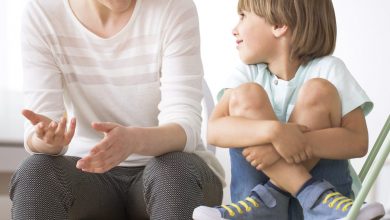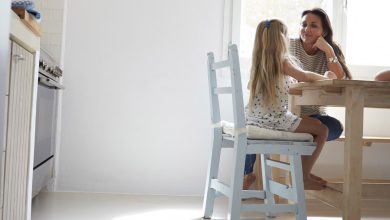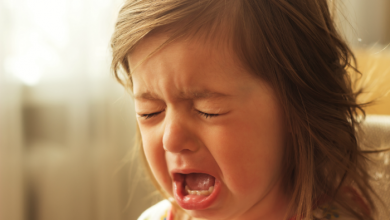
When was the last time your child got worked up?
Children are empathic. They’re always reading their parents and their environments to be safe and to learn how to be in the world.
If they try to fix other people’s emotions, they’ll get overwhelmed and stressed. In this episode, Carol and Anne share tips to recognize when your child is taking on others’ energy, plus some conversational and energy techniques to help children to stay calm and hold their own.
This Episode’s Parenting Practice
Use the energy techniques in the episode: spinal flush and zip up.
Talk to your child about sending love to those who are distressed rather than taking on or trying to fix their emotions.
Observe if you’ve labeled any of your children a peacemaker or troublemaker. Discontinue that so they can be responsible for their own experience in the family, rather than everyone else’s.
Transcript of podcast episode
Carol: You learn subconsciously, “Oh, the strategy is maybe if I take that energy, mom will feel peaceful.”
Welcome to The Child Whisperer Podcast. I’m your host, Carol Tuttle, author of the bestselling parenting book, The Child Whisperer. I’m with my co-host, Anne Tuttle Brown.
Anne: “My question is about Type 2s taking on other’s emotional energy. I can see a change in my daughter when she is around someone who is sad or worried or angry. How does a Type 2 still feel empathy without becoming weighted down?”
Carol: I think any child, any Type child can take on other people’s emotional energy. I think a Type 2 might be more prone to it since they have an emotional connection with the world. So, let’s speak to this at large and give some special tips, maybe, for a Type 2 child. So, children are very empathic, meaning they have a sense of emotion. They learn to read their parents. That’s the first place it starts. They have to kind of read mom and dad, “Where are they at emotionally?” They take in that information to know, what’s the mood? What’s the mood of my mother and father? What’s safe? What’s kind of allowed right now? What’s going on?
Anne: What are the boundaries?
Carol: I had to do it a lot because there was just so much unpredictability in my environment that I know it will help you become a very intuitive parent once you turn it into a positive, because you’ve been doing it your whole life. What do you do when your children has this vulnerability to taking on other’s emotions? First of all, are they taking on Mom or Dad’s?
Anne: Yeah. Well, what are some clues that they’re taking on and they’re not just being emotional because of what’s going on in their own life? How do you know if it’s like, “Okay. This is…”?
Carol: You see a change. Just like this mother pointed out, I can see a change. They’re just riled up, they’re worked up.
Anne: Would it be different based on Type, or do you think there’s just kind of one response that’s just a little bit…?
Carol: I think as we’ve talked about how children express stress, it will look like that more.
Anne: Just amplified.
Carol: Yeah, just amplified, and you can’t put your finger on it and you’ve tried all these different strategies. Anne, everything we’ve talked the last several podcasts leading up to this one, your intuition tells you.
Anne: That’s right.
Carol: We’ve talked about, you know, what does it look like when a child’s not…
Anne: Well, I think it’s really obvious if they come home from school and it’s like, “Whoa. Okay.”
Carol: Well, I had my youngest son who’s a Type 4. He was very sensitive to other people’s emotional state. And he’d come home from school and he would just act out. He was just difficult and angry and frustrated, and it dawned on me. This is where my intuition guided me. I said, he’s taking on other people’s energy at school. He’s not keeping his own container of self. And now he’s trying to dump it all. It feels overwhelming to him. He’s trying to kind of detox his system without any awareness. And that’s when I taught two skill sets I’ve taught for years, which are called the spinal flush and the zip up. And you can learn these strategies. I have them both in my Lifestyle membership content and the Healing Center membership content. They’re such vital pieces to know. They’re very simple techniques.
Down the back, in the middle of your back along the line of your spine, you have what’s called your governing meridian. Your meridians are energy pathways. The governing meridian is sort of the overseer of the whole meridian system. And so when you flush it, meaning you just swipe down from the bottom of the neck off the tailbone four, five times while that person’s taking deep breaths, it’s like cleansing all the meridians, the whole meridian pathway which energy is running on.
So, the meridian system is on overload. So, you swipe the governing meridian, cleanse it off, and you kind of dump extra energy. Just do it. You’re gonna feel…
Anne: It’s very refreshing.
Carol: Yeah, it’s very refreshing. And then the zip up, the other primary meridian that kind of helps support containment of your own energy is called central meridian. And that runs on the front side of the torso from your pubic bone up to your bottom lip. When that’s strengthened, it helps your energy become its own system where it strengthens it, allows it to support your energy system without the vulnerability of taking on other people’s energy. And all you gotta do is pretend there’s a zipper running up the center of your torso, zip it up three, four times. That strengthens the central meridian. I taught Mark how to do this and we did it in the morning. He’d zip himself up before he went to school and I’d give him a few spinal flushes when he got home. Completely changed his experience.
Anne: Amazing.
Carol: So simple. And yet, that vulnerability, a lot of children have. Now, a Type 2 who naturally has a sensitivity to other people’s emotions, and we teach this to adult Type 2s all the time, be an observer in showing empathy without having to feel it to show empathy. And watch your language and correct your child. “I feel so bad for them.” You don’t need to feel bad for someone. Notice the emphasis on feeling the feelings. You don’t need to feel bad for someone in order to have compassion for someone. And that is something that you can teach a Type 2 very early in life as a skill set to manage their own emotional sensitivity. They will naturally have empathy and compassion, it’s who they are, without having to feel it. That’s so valuable. So many adult Type 2 women especially have had to learn this skill.
Anne: You’ve taught you can teach them how to send their love to the person without having to feel their emotion.
Carol: It’s like, “I’m gonna feel it to relieve them. Now I’ve got it,” versus, “I’m gonna send them a gift of support and love and empathy, a warm kind energy to lift them, to nurture them. And I’m gonna give something to them rather than trying to help them by taking it on for them.”
Anne: That’s a good differentiation. Also, you’ve taught the phrase, “This is mine, that is yours.” That’s been helpful. I think these are such good skills to teach when they’re children because then they can grow up knowing, “This is mine. This is my feeling. That is your feeling. Okay. Now I know the difference. And I know what was starting to cause me angst is actually something that you’ll need to deal with and I can be okay.”
Carol: Mentioning that, the first place to start is in your own home. Is your child running your energy? Notice that when you’re stressed, your child acts out more, your child is upset more, your child is needing more attention. You’re like, “Oh, my goodness. They’re running this stress for me. We’re now in it together.” Those same phrases, adapt it a bit, “This is my emotion, not yours. I’m going to feel it. You don’t have to fix it.”
Anne: You’re not in charge of my feelings. You’re not in charge of fixing me. You’ve said that to me when I was younger, when I would get nervous about how you were feeling. You said, “You don’t need to worry about this. This is mine to deal with.”
Carol: You called me last night and we chatted and you were stressed about something and you had an interaction with someone. And my first comment to you was, “Give it back to them. Don’t take their stuff.”
Anne: I’m like, “Oh, yeah.”
Carol: What did you do in your mind? What did you see when I said that? I said, “That’s not yours. Give it back to them.” Now you’re running it.
Anne: Yeah. I just saw, in my mind, kind of me just throwing my hands in the air and just kind of like swapping it away like you would a fly, like just, “Ugh. Not mine.”
Carol: I put it in a big ball and I throw it right at them. I throw it right into their space. That’s yours.
Anne: These are playful visualizations that I think would really relate to a child.
Carol: And then in a family, there’s sort of a who becomes that sort of central emotional barometer for the family. Does one…
Anne: They’re usually labeled as the peacemaker. And it’s that one kid that’s taking on everybody’s crap.
Carol: Yeah, there’s that side of it, and the other side is who seems to get everybody running to their mood.
Anne: Okay. Yeah.
Carol: Most times it’s the mom, but it might be one of the children. Maybe it’s the dad when dad gets home. The whole mood changes. And so it’s a real art to hold your own, hold your own energy, hold your own sense of being and wellness, and observing what other people may be going through. And you teach your children first by giving them permission not to do this for you, not to do it for their father. To even own your stuff by saying, “I am feeling stressed right now.” The older the child, you say, “Mom, I just need some time by myself,” or, “You need to stay away from me. It won’t look good.” You’ve got teenagers in the house. Just tell them.
Anne: Exactly. Don’t leave them guessing. Yeah.
Carol: I’m in one of those places. You know, watch out.
Anne: And then you’re not walking on eggshells.
Carol: Exactly.
Anne: The kid can know what to expect. I think that’s really supportive. Just be like, “I’m just gonna need some time,” and just reassure them, like, “It doesn’t involve you,” or…
Carol: You don’t have to mask it necessarily and pretend everything is fine, but be responsible for it and check yourself. Again, in our marriage, we’ve gotten to the point where we can now say, “I’m processing a lot of stuff right now. It’s better we just not interact. It’s better we just not engage in communication.”
Anne: Let’s take a break.
Carol: Mm-hmm. There’s times when it’d be best if one of us went somewhere even, like, and we’ll agree to that. You should probably just go off and do something. And I’m gonna get through this, because you know you’re very vulnerable to enrolling your family members. Parents, this is a huge opportunity to teach accountability, that you’re willing to be accountable for your stuff as a parent. It’s such great modeling. Such that it’s not always…it’s kind of like disciplining yourself, correcting yourself. All the things you do with your kids, you’re now applying to yourself, going like, “I’ve got things I’m still working on, and I’m willing to do the same things I’m encouraging you to do with myself.”
Anne: Now, on the flip side, you had shared that there’s the one person that maybe everyone’s energy kind of circles around. There’s another person in the family that could be the one that’s trying to take on…be the peacemaker and try and make it all right for everyone.
Carol: Yeah. And you might be referring to that, “Oh, they’re the peacemaker in the family.” They pay a huge price for that. It’s not fair to them.
Anne: Do you think they’d usually be a Type 2 or a child with a secondary Type 2 in that scenario?
Carol: I think so. Very much.
Anne: I could see that with…
Carol: What’s their motive? A Type 1 or a Type 2, they want people…just they want the mood, the energy to be light.
Anne: Yeah, it could be a Type 1 as well.
Carol: They want it to be light, they want it to lighten things up, they want people to be happy. That’s a very deeply driven motive that they’re not even conscious of. A Type 2 child, they want everyone to feel peaceful. For their own sake, they want peace and harmony and calmness and yet they want that for others. And so, you learn, subconsciously, “Oh, the strategy is maybe if I take that energy, Mom will feel peaceful.” And you grow up…
Anne: No contention. That’s what the Type 2s wanna avoid, that contention. And so they’re gonna try and appease it. Yeah, and the Type 1s want to keep it light. And I think Type 3 would wanna fix it, a Type 4 would just want things to be—
Carol: Type 4s just wanna get out of there.
Anne: Yeah.
Carol: Type 4s will go to their room.
Anne: I’ve seen this…
Carol: They won’t be as motivated. They won’t be as motivated to try and change the environment. They’ll have different strategies to…they’ll wanna avoid the environment rather than try and change the environment. A Type 1 and Type 2 would be the most… And then they grow up being people-pleasers and really not taking care of their own needs because everything’s focused on everybody else in the environments they’re in. It’s just now a habit, a pattern that they live.
Anne: So, my Type 2 son, he’s two years old, and he’s sandwiched between two Type 3s. And I could see that this could be his future of trying to make sure everyone is okay. Naturally, he’s inclined. If his sister starts crying or his little brother, he wants to go and he wants to see what’s the matter and he wants to offer a hug. And so I’ve supported him in doing that, but also in some ways even just at this young age, reminding him that, “That’s Katie’s situation. She needs to figure it out. You’re so good at sharing your love, Sam.” You’re so good at helping, but also not pegging him as, “That’s your job.”
Carol: Right. By calling him, “Oh, they’re the peacemaker,” we might think that’s flattering, and yet it’s reinforcing…
Anne: It’s a big responsibility.
Carol: It’s reinforcing something a child can’t ever be successful at. They just aren’t. They’re not. They don’t need to, they’re not meant to, and they cannot succeed in it because they’re children. No person should carry that upon themselves in behalf of other people. Peaceful states of being is a personal responsibility in my world and you’ve got to choose it for yourself.
So, this week’s parenting practice, use those tools that we taught, the spinal flush, the zip up, and then teach your child to send love to those that are distressed emotionally rather than take on energy.
And have you cast a label on any of your children as a peacemaker or a troublemaker? Discontinue that and help them be responsible for their experience in the family system rather than feeling responsible for what everyone else is experiencing.
Thanks for listening. For more support, go to thechildwhisperer.com, where you can purchase the book, subscribe to our weekly parenting practice e-mail and find a transcription and audio of The Child Whisperer Podcast.
Anne: If you’re listening on iTunes, thank you for leaving a review. If you have a parenting question, please send it to [email protected].



